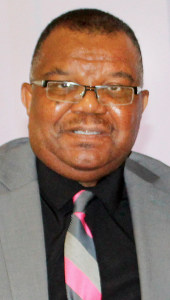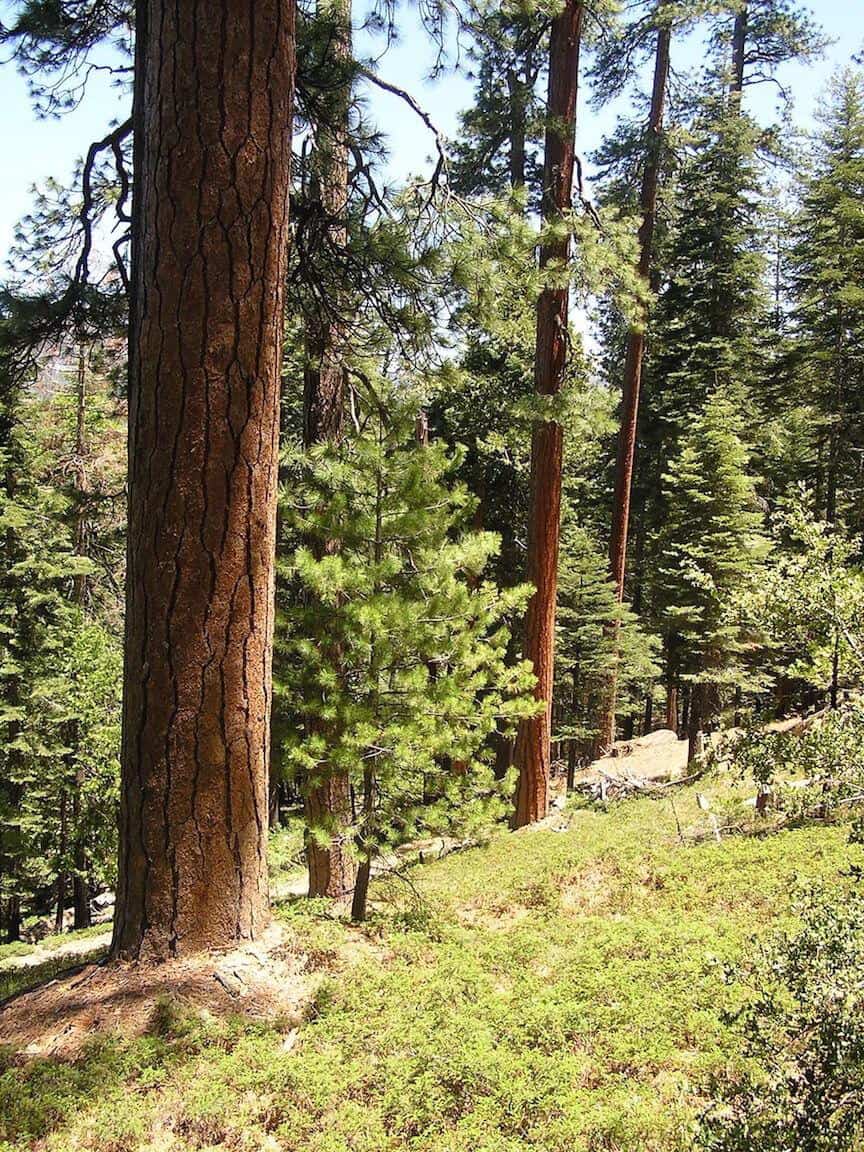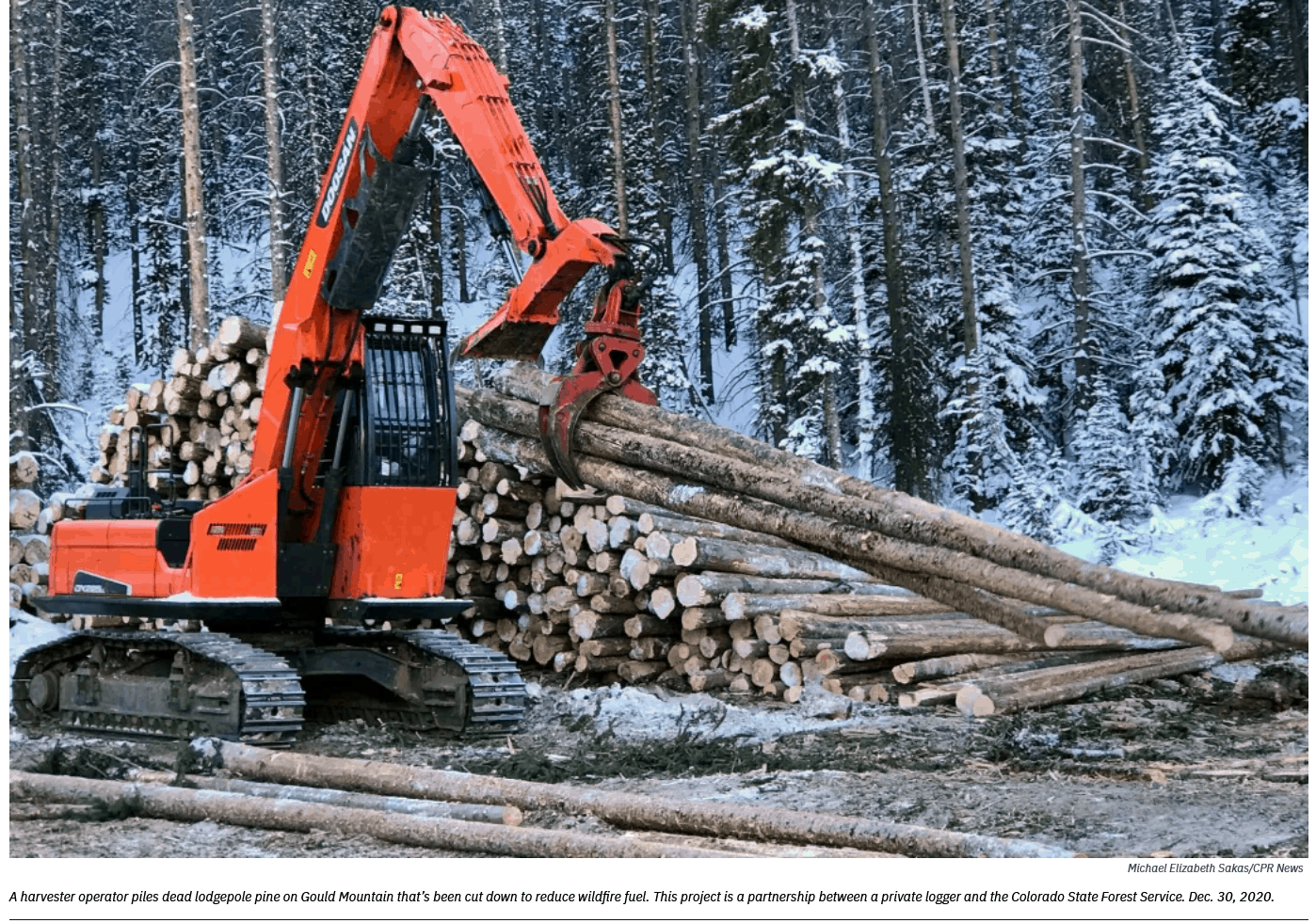This is from the Ten Common Questions paper, a synthesis published in Ecological Application. I’m posting each answer separately. If you use the search box and look for Ten Common Questions, you can find them all. My introduction to the paper is here. Please put any questions for the authors in the comments; I’ll try to get answers from them. I’d appreciate if the tone were respectful (think graduate seminar, not Twitter).
4. “Should active forest management, including forest thinning, be concentrated in the wildland urban interface (WUI)?”
A question often asked by land managers is where to locate fuel treatments to maximize their advantage while minimizing adverse impacts. The 2000 National Fire Plan (USDA and USDI 2001) and
the 2002 Healthy Forests Initiative identified the need to reduce wildfire risk to people, communities, and natural resources. The 2003 Healthy Forests Restoration Act (HFRA, US Congress 2003) then specified that >50% of fuel reduction funding be spent on projects within the Wildland Urban Interface (WUI), and it reduced environmental review within 2.41 km (1.5 miles) of at-risk communities. The significant increase in homes lost and suppression dollars spent in the WUI in subsequent years (Mell et al. 2010) has catalyzed extensive research on the WUI environment and population expansion into wildlands (Radeloff et al. 2018). Subsequent studies demonstrating fuel treatment effectiveness in the WUI (Safford et al. 2009, Kennedy and Johnson 2014) and spatial methods for optimizing WUI fuel treatments (Bar Massada et al. 2011, Syphard et al. 2012) could be taken to suggest that most fuel reduction should be implemented in the WUI to protect homes and lives.
However, prioritizing the WUI-only for fuel reduction treatments is often too narrow in scope to address broader landscape-scale objectives. For example, Schoennagel et al. (2009) found that more than two-thirds of the area within a 2.5 km radius of at-risk communities was privately owned and unavailable for federally-funded fuel treatments. This finding partly elucidates why most hazard reduction fuel treatments are implemented outside of HFRA-designation. Fuel treatments on federal lands near communities may also be significantly more difficult, expensive, and risky to implement, while air quality regulations and associated risks create disincentives to treating near homes. Alternatively, agencies may be able to meet both annual prescribed burning accomplishment targets and ecological objectives in areas more distant from the WUI with fewer risks, less money, and fewer personnel (Kolden and Brown 2010, Schultz et al. 2019). Further, there is increasing evidence that treating fuels across larger spatial extents in strategically planned wildland locations, rather than immediately adjacent to WUI, can indirectly reduce risk to communities (Smith et al. 2016, Bowman et al. 2020). Benefits of this strategy include increased initial attack and short-term suppression effectiveness, reduced crown fire potential and ember production, reduced smoke impacts to communities, and increased forest resilience (Ager et al. 2010, Stevens et al. 2016).
Fuel reduction treatments can support cultural, ecological, ecosystem service, and management objectives beyond the WUI. For example, treatments that restore the ecological resilience of old growth forests and patches with large and old trees are critical to long term maintenance of wildlife habitats (Hessburg et al. 2020) of seasonally dry forests and terrestrial carbon stocks, and slowing the feedback cycle between fire and climate change (Hurteau and North 2009). Treatments in watersheds that are distant from the WUI and protect municipal and agricultural water supplies are critical to minimizing high-severity fire impacts that can jeopardize clean water delivery (Bladon 2018, Hallema et al. 2018). For example, post-fire erosion and debris flows may cause more detrimental and longer term impacts to watersheds than the wildfires themselves (Jones et al. 2018, Kolden and Henson 2019).
Finally, treated areas outside the WUI can serve as defensible positions for fire suppression personnel that can be used to establish control lines or allow for more flexible suppression strategies,
freeing up resources to protect WUI infrastructure or forests in another area (Thompson et al. 2017), or can support rapid and organized evacuation when they are implemented along evacuation routes (Kolden and Henson 2019). Across complex landscapes, it is more effective in the long-term to prioritize fuel treatments that maximize benefits across large areas and over long time frames, rather than constrain them to the WUI.
*************************
I don’t think any of this is news to TSW readers, though perhaps the citations are and may be very handy to NEPA folks. We have heard for years the argument that the FS shouldn’t treat fuels “miles from communities”. And yet yesterday there was a story of a California wildfire traveling up to 8 miles in a single day. As I’ve said for many years, keeping fires out of town is generally thought to be a good thing.




